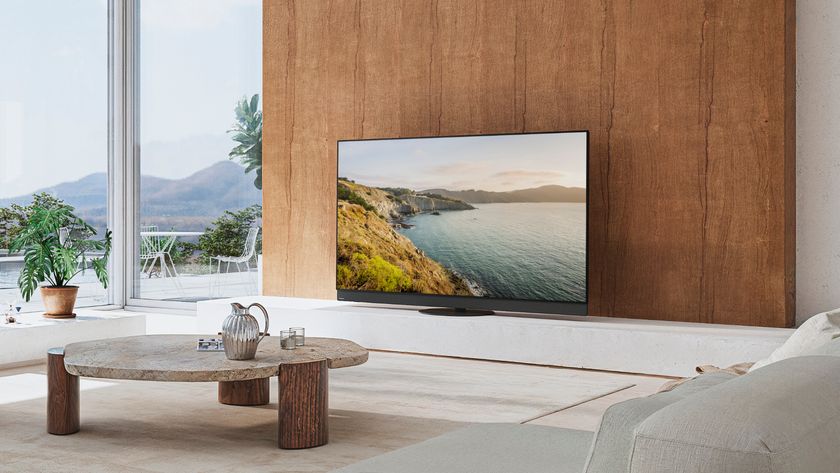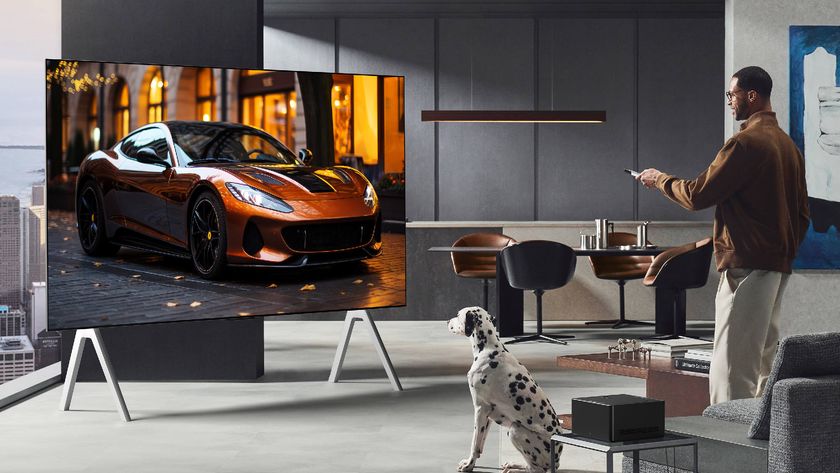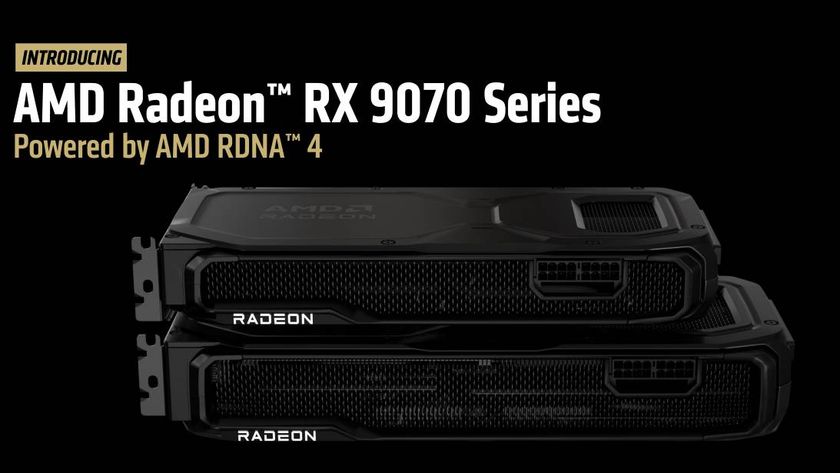The best TVs under $500 in 2025
You don't have to scrape the bottom of the barrel for worthy TV under $500
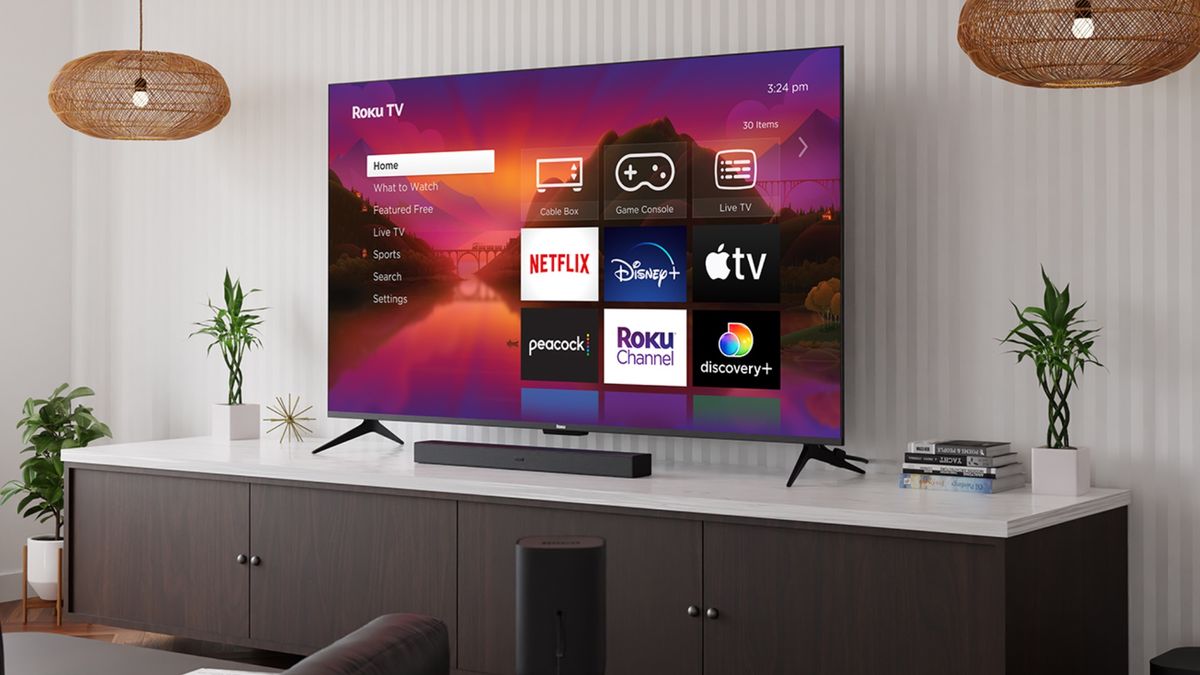
The best TVs under $500 are a lot better than you'd expect them to be. Years ago, spending $500 on a new TV might only get you 1080p resolution and a 40-inch screen. These days, it's definitely possible to score a 55-inch 4K smart TV for less than that.
One of the best TVs under $500 is the Roku Plus Series TV, a QLED display that runs the gamut on features and even comes equipped with some gaming specs, to boot. It's only a 60Hz panel and uses HDMI 2.0 ports instead of the newer 2.1 standard, but its brightness and color saturation are unbeatable at this price point. The 55-inch version is priced around $400, while the 65-inch version can be found on sale for around $499.
If you're looking for something even cheaper, check out the TCL Q6, an entry-level QLED from last year. It offers Google TV instead of Roku, but it's also a solid performer with an accurate out-of-the-box picture.
As of January, 2025, we're hard at work testing and reviewing more affordable TVs to add to this list. Why trust us? We evaluate dozens of TVs every year, many of which fall under this category.
The best TVs you can buy under $500
The quick list
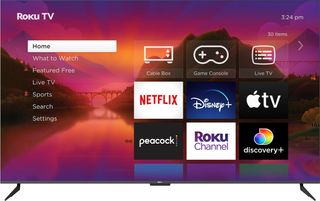
You can't beat the Roku Plus for under $500. The Roku interface is user-friendly, and the surprisingly good HDR color and sound performance punch well above their weight. In a world where Roku TVs are few and far between, we appreciate that one of them is available at this ultra-low price point.
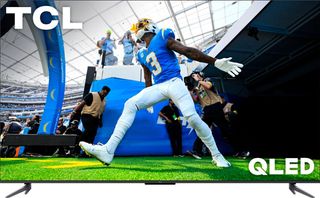
The TCL Q6 is an entry-level QLED whose 55- and 65-inch size options can be found on sale for between $250 and $400. It comes with the Google TV smart platform built right in, and according to our tests, the Q6 offers an accurate picture right out of the box.
The full list: Best TVs under $500
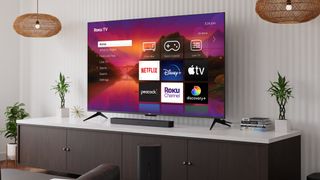

Specifications
Reasons to buy
Reasons to avoid
The Roku Plus sports a surprising value as a QLED TV from the makers of one of the best streaming devices. It supports all the latest HDR standards including HDR10, HDR10+ and Dolby Vision, plus it comes with four HDMI 2.0 ports. At the time of writing, most major retailers are carrying the 55-inch model for around $399. If you're shopping for something bigger, the 65-inch Roku Plus Series can be found for around $499.
The Plus Series' defining feature is its built-in Roku functionality. In a world where the concept of a Roku TV seems to be fading, it's nice that the option is still available at an agreeable price point.
The Plus Series doesn't get as bright as its higher-end counterpart (we clocked its peak HDR brightness at 459 nits), nor can it deliver 4K content above 60Hz. This makes it a less-than-ideal pick for A/V enthusiasts or gamers shopping on a budget. But for folks who just want a reliable, set-it-and-forget-it option, the Plus Series is a great pick. It won't wow you with its picture unless you're upgrading to 4K for the first time, but it'll get the job done.
As mentioned, the 55-inch model is currently the only size in the series sitting at or below $400. If you're looking for a 65-inch version, you'll have to spend a little more.
Read our full Roku Plus Series 4K QLED TV review.
Best TV under $400
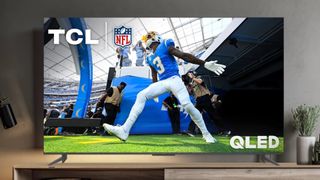
Specifications
Reasons to buy
Reasons to avoid
The TCL Q6 is a heavily discounted, entry-level QLED with Google TV built right into its software. Right now, the 55-inch model can be found for around $250 to $300. If you're looking for a 65-inch TV, the Q6 currently costs between $350 and $400.
In our hands-on testing with the Q6, we measured its peak HDR brightness at 498 nits and its SDR brightness at 431 nits. The latter metric is a bit higher than some of its rivals, but HDR isn't as bright as you'd find on the Roku Plus. In terms of color saturation and accuracy, the Q6 covers only 97.41% of the Rec709 color space (most TVs cover 99% or more) but had some of the most accurate colors of any TV at this price point with a Delta E value of around 2.1.
The takeaway? This isn't the brightest TV, nor the most colorful, but when it comes to color accuracy and SDR brightness, it's a top contender.
For under $400, and compared to models from Insignia and Toshiba, the TCL Q6 is the better option and the one we'd recommend to friends and family.
Read our full TCL Q6 QLED TV review.
How to choose the best cheap TV
How to choose the best TV under $500
Why you can trust Tom's Guide
Scoring a TV for less than $500 means giving up some of the nicer features and design touches for a more affordable price. But you can still get some excellent features without blowing the budget. Here are a few things you can still easily find in your price range.
4K resolution: 4K resolution is so affordable, and the quality so much better than 1080p or 720p, that we always recommend going for 4K. Unless you're on a shoestring budget, getting a proper 4K TV won't even save you much money, but you will notice the difference.
Screen size: You may not always be able to score a premium 65-inch TV for under $500, but you can still get a decent 55-inch model, so don't settle for some dinky 43-inch set unless it's the right size for the space.
HDR support: If there's one feature we recommend, it's high dynamic range (HDR). Even basic HDR support provides better color, brighter highlights and richer shadows, giving you a better picture in every respect. If you can find a set with Dolby Vision, that's even better, but you may pay more for that feature.
Connectivity: More HDMI ports are always better, so you don't find yourself having to awkwardly swap plugs on the TV every time you want to fire up a Blu-ray or jump into a game.
Gaming: For affordable gaming TVs, we recommend looking for sets with higher refresh rates of 60Hz, but the latest Xbox Series X and PS5 consoles can actually go higher. Lag time is another concern, so check out individual reviews to find sets that have a lag time of shorter than 20 milliseconds for the best performance.
What features are worth paying more for?
While budget-friendly TVs are pretty good, there's no denying that spending more will get you some features that you just won't be able to find for less than 500 bucks. If any of the below sound like a must-have for your new TV, consider spending a little bit more.
Screen size: If you're lucky, you will find one or two 65-inch TVs selling below the $500 mark during sales events. And going larger than that will always cost more. If you want something like a 75-inch TV, the only option is to pony up more money.
Picture quality: 4K resolution is great, but today's premium TVs have taken picture quality to new levels of excellence with better color, brightness and contrast, not to mention super-smooth motion handling. If you want the best picture quality, you'll want to consider paying more for technologies like quantum dots, mini-LED and OLED.
Sound quality: Today's budget TVs do a lot of things well, but sound quality usually isn't one of them. We recommend pairing your new TV with one of the best soundbars to get better audio than the tiny speakers crammed into a thin TV chassis could ever produce.
How we test the best cheap TVs
How we test TVs
Evaluating TVs is about more than just kicking back to watch a movie. We lab test every TV, measuring color gamut, color accuracy and brightness to objectively see which sets are the best for these key indicators. We also test for lag time – a key detail for gaming – measuring to the millisecond how long it takes for content to travel from the original source to the screen. We use these results to make numbers-based comparisons about color and display quality.
We also spend time with each set for real-world evaluation and see how our lab results translate into more subjective performance. We also compare sets side by side and view samples from the latest movies, specialized test patterns that highlight strengths and weaknesses of each display, and a range of content across several sources. With that information, we can tell you which TVs look best, sound best and offer the best viewing experience.
Finally, we evaluate the smart TV functions and apps for each TV, looking at everything from the remote control design to the voice interaction.
We put all of that data together with our real-world testing and stack it against the price of the TV. The result is a score that we feel best represents the totality of that model, and how well it stands up against its contemporary rivals. A TV that scored highly five years ago may not score as highly against a newer model, but we do our best to update reviews when newer models become available.
Sign up to get the BEST of Tom's Guide direct to your inbox.
Get instant access to breaking news, the hottest reviews, great deals and helpful tips.

Nick Pino heads up the TV and AV verticals at Tom's Guide and covers everything from OLED TVs to the latest wireless headphones. He was formerly the Senior Editor, TV and AV at TechRadar (Tom's Guide's sister site) and has previously written for GamesRadar, Official Xbox Magazine, PC Gamer and other outlets over the last decade. Not sure which TV you should buy? Drop him an email or tweet him on Twitter and he can help you out.
- Ryan EppsStaff Writer
